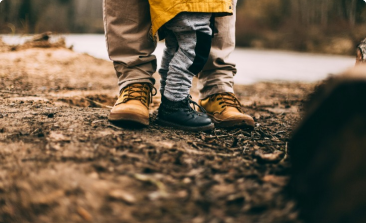Description
Fighting between children occurs when disagreements become aggressive, such as when they become physical or involve shouting, hitting derogatory remarks, or name-calling. Strong disagreements and fights are common among children who are still learning to control their emotions.
When to intervene in a sibling fight
Standing back from a disagreement can sometimes be beneficial because it allows children to sort things out for themselves.
However, if a disagreement escalates into a fight, you must intervene before anyone is harmed. Children are still learning how to react to their emotions, so stepping away without adult assistance can be difficult.
Steps for breaking up sibling fights
When a fight breaks out, do the following:
- Stop fighting before the crying begins. It may be necessary to physically separate your children or send them to opposite sides of the room to calm down.
- Maintain your composure. This may appear impossible, but the goal is not to make matters worse. Try to save your energy by providing positive feedback on the desired behaviour.
- Tell the kids you’ll discuss it later. Children are frequently too upset to hear what you have to say at first. Wait until things have calmed down before discussing the problem. With older children, this could even be the next day.
- If your family uses consequences, apply fair consequences to all children who fight. For example, if your children are fighting over a toy, make certain that neither child receives the toy following the fight.
Tips for handling sibling fight constructively
When sibling rivalry arises, the following suggestions can help to defuse the situation:
- All children should be treated fairly. But keep in mind that fair treatment isn’t always the same as equal treatment. It may not be possible, for example, to treat a six-year-old and a three-year-old in the same way.
- Avoid making negative comparisons. Saying things like, ‘You should have known better because you’re older,’ or ‘You’re the troublemaker,’ can aggravate a child’s hurt or resentment
- Identify the cause of the struggle. This will help you find the best you can do. For example, if a child has pushed a sibling and taken their toy, you need to intervene. If you don’t, the child will learn that fighting is a way to get what you want. Keeping an eye on your kids is the secret to knowing the reason for their struggles — and finding the right way to deal with it.
- Use family rules to make expectations of behaviour clear. You can remind your children of the respective family rule and consequently draw consequences.
- To have a plan. That means thinking about how you handle small disagreements and big arguments. For example, you can help children resolve small disagreements together, but you might also choose to use consequences for fights involving physical violence or fights that happen after you’ve all agreed on a solution to a problem.
Problem-solving after a sibling fight: steps for older children
What you do after a fight can help school-age children learn how to solve their own problems in the future. For best results, wait until tempers have cooled and the children are ready to argue again. Then follow these steps.
- Let the kids know what you’re up to. For example: “I have decided that none of you should use the computer until we find a way to stop the fighting. Do you understand? Are you ready to work on solving the problem now?”
- Ask both children to share what they think the problem is. Encourage them to see it from the other person’s perspective as well as their own. You could tell them that two people might still disagree even if they both have valid viewpoints. You may need to remind them to listen to each other before speaking.
- Ask both children to say what they want. You can also help them think about their expectations. For example, “Tegan, is it fair of you to have the computer on all the time?”
- Brainstorm together. Let the children run wild with ideas for solving the problem and encourage them without judging their ideas. Throw in some ideas of your own and write them all down.
- Rate the ideas. Begin by asking the children what ideas don’t work. Then look for the solution with the most advantages and the fewest disadvantages. For example: “Does anyone think this could work?” “What would be good (or bad) about that?”
- If you don’t find a solution at first, come back later. You can ask the children to go out and brainstorm ideas together, or you can ask other people who have had similar problems. Or you can look for ideas in parenting books or websites.
- Once you’ve all agreed on an approach, try the solution and see how it works. Start again if things don’t improve.
Dealing with your own emotions
Keeping calm can really help when kids are fighting. If it’s safe and you don’t need to take immediate action, pausing, counting to 10, and then acting can help.
That extra 10 second is often enough to calm your emotions. If that doesn’t help, you might want to ask another adult to take care of things while you take some time off.
You might also like
Parenting Updates: Subscribe Now!

ALL UPDATES
Go from pregnancy to adolescents with our email bulletins, loaded with reasonable, modern data about bringing up youngsters and taking care of yourself as a parent.
SUBSCRIBE NOW
MOVIE REVIEWS
Find the best motion pictures for your family with our youngster amicable surveys. Search new deliveries and more seasoned motion pictures by age, rating and type.
SUBSCRIBE NOW
MENTAL HEALTH RESOURCES
Is it safe to say that you are an expert working with families? Get data about kid, adolescent and parent psychological well-being and prosperity.
SUBSCRIBE NOW











































